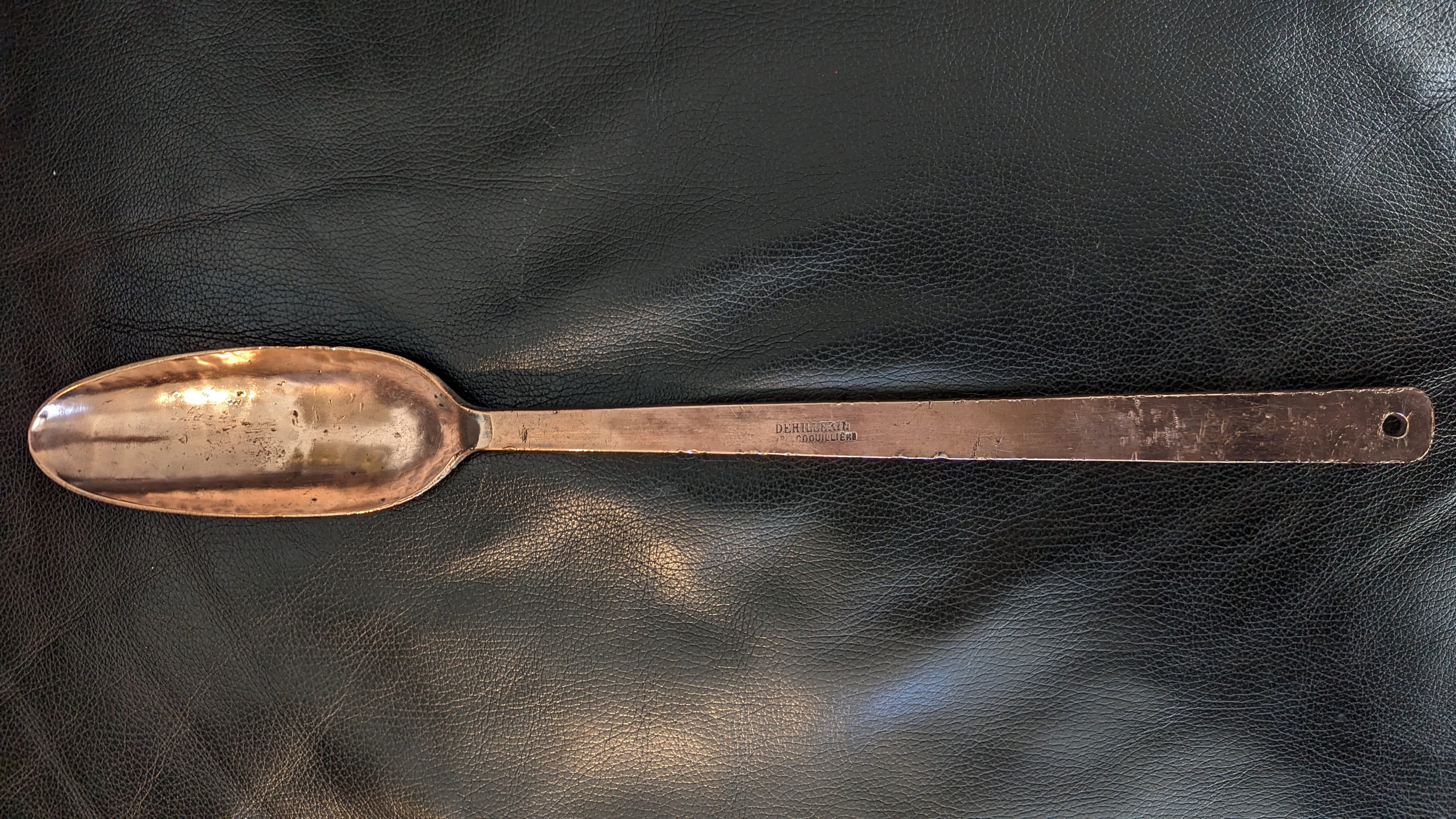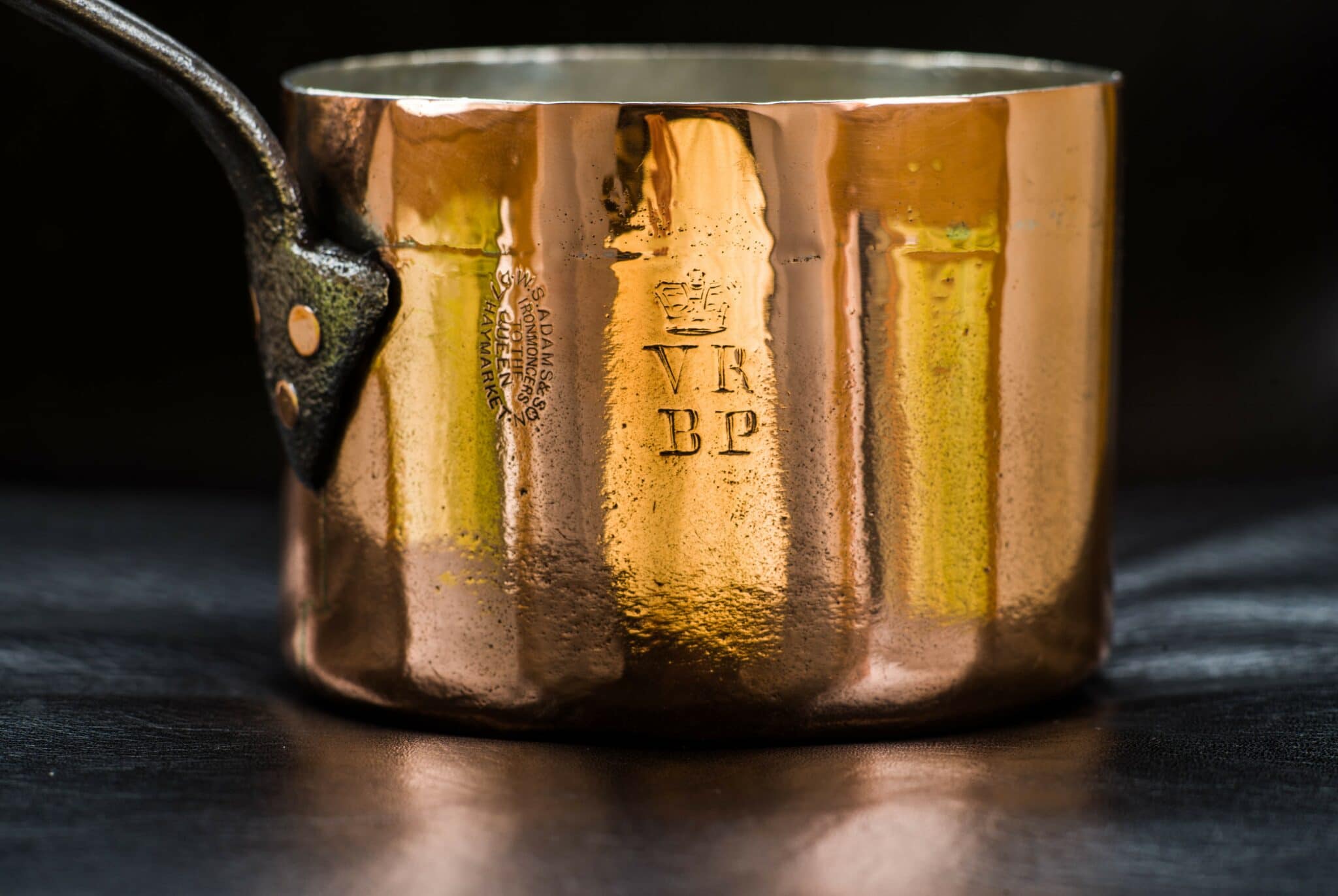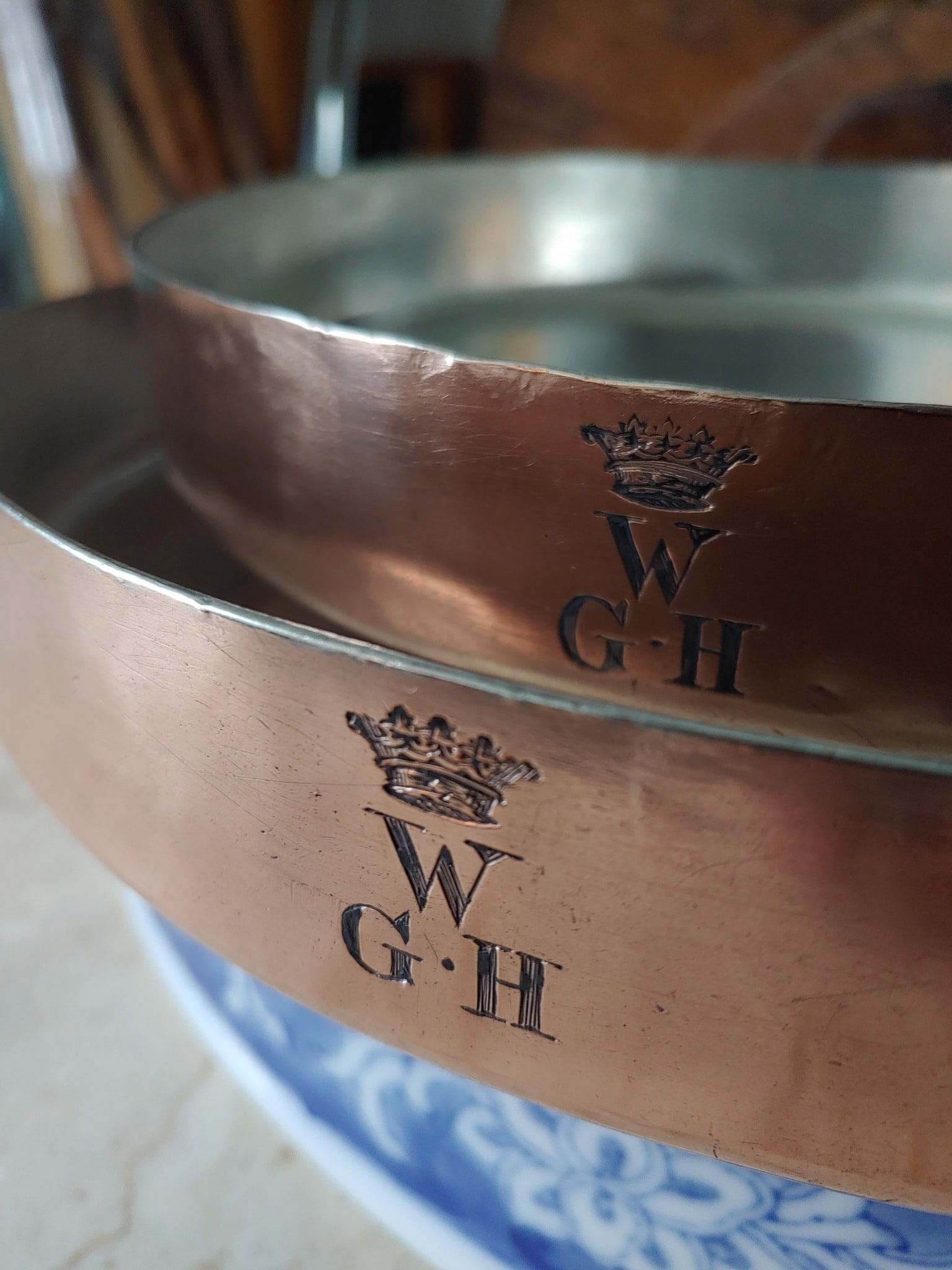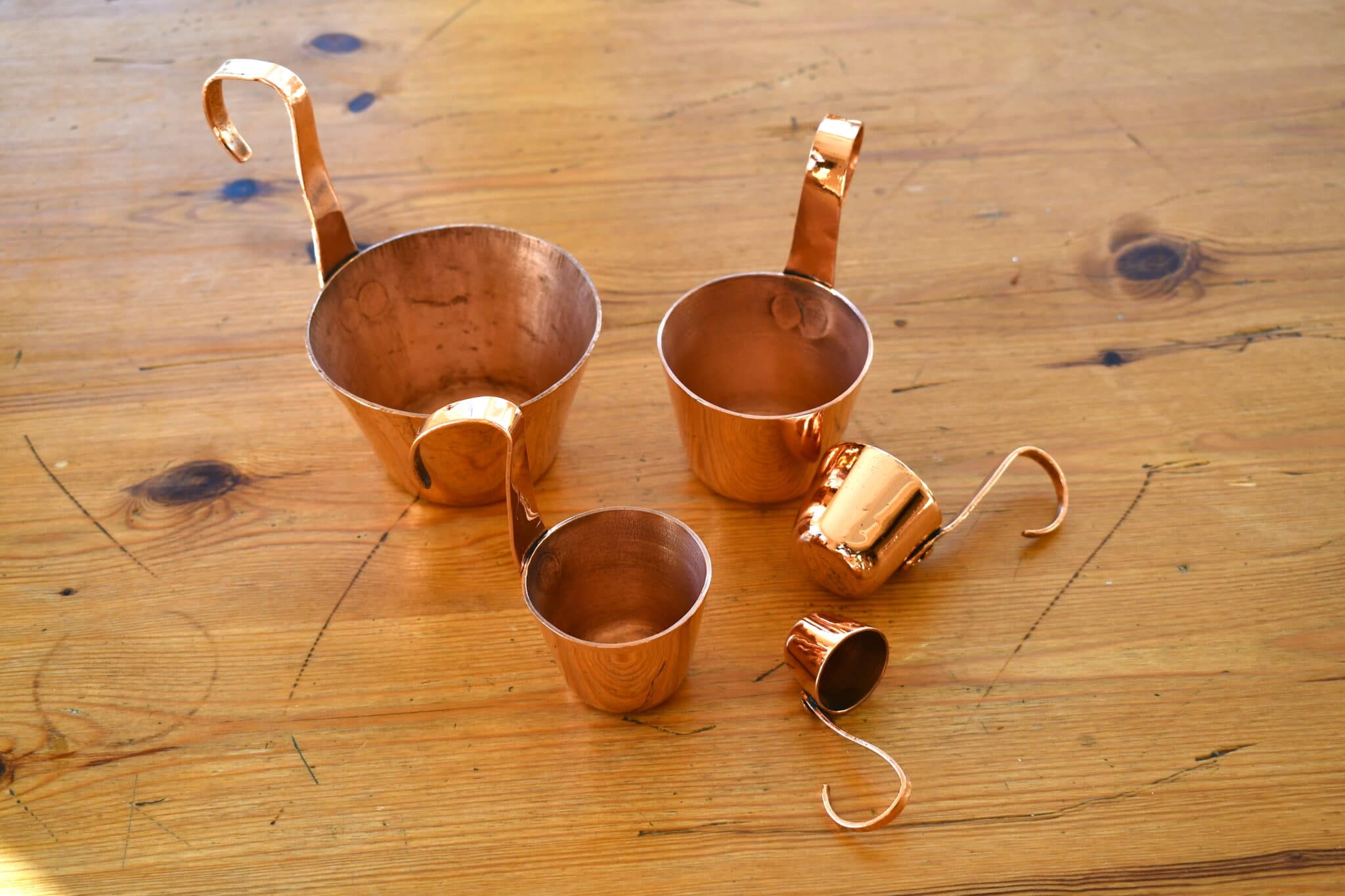I had a really clever reason for naming this daubière after Henry VI, but really, when it comes down to it, they just look so much alike.

- Type: Tin-lined daubière in smooth finish with brass handles fastened with three copper rivets; cap-style lid with brass handle fastened with two copper rivets on each bracket
- French description: Daubière étamée et martelée avec poignées en laiton muni de trois rivets en cuivre; couvercle emboîtant avec poignée en laiton avec deux rivets en cuivre
- Dimensions: 38cm long by 21cm wide by 23cm high (15 inches by 9.2 inches by 8.7 inches) without lid
- Thickness: 1.8mm at rim
- Weight: 6434g (14.2 lbs) without lid, 8182g (18 lbs) with lid
- Stampings: “38” on body and lid; “0” on body
- Maker and age estimate: Unknown; 1880–1920
- Source: Etsy (France)
At 38 centimeters in length, this daubière is halfway between the conventional French sizes of 36cm and 40cm, and so I named it for a man who was also halfway between two worlds: Henry VI of England, king of both France and England in fits and starts from 1422 to 1471. There are a few sizes of cookware that seem to have fallen out of common usage and a daubière of 38 centimeters is one of them. I suspect this makes it a rather old pan but there are no markings to help me date it.
It is a beautiful piece; I am certain that it started life with more pronounced hammering but restorations can soften exterior surfaces and it now has a placid finish. I find its smooth flanks lovely.

Its brass handles have three copper rivets that are nicely rounded and low profile.

The interior rivets are flush-finished, which is a nice touch.

It has lovely dovetailed seams as well.
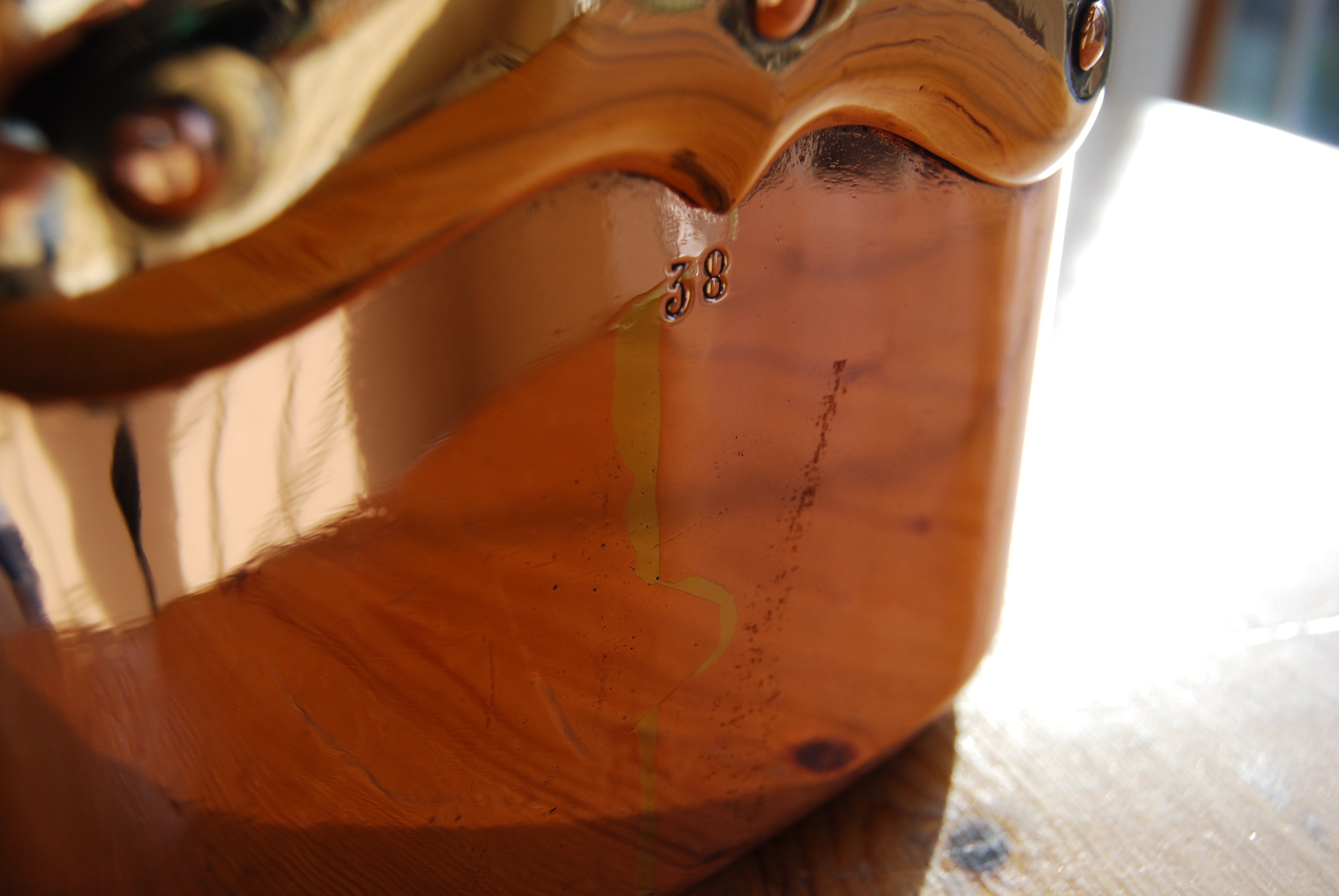
In particular, note the symmetry of the spacing of the crenellations on the base. At first I thought this meant it had been machine cut (and therefore made towards the late 19th century or early 20th century), but I do see some irregularities in the shape of individual crenellations that would mean they were hand-cut. I still think that the irregular size makes this an early piece, and hand-cut dovetails would support that, but I’m still not certain.
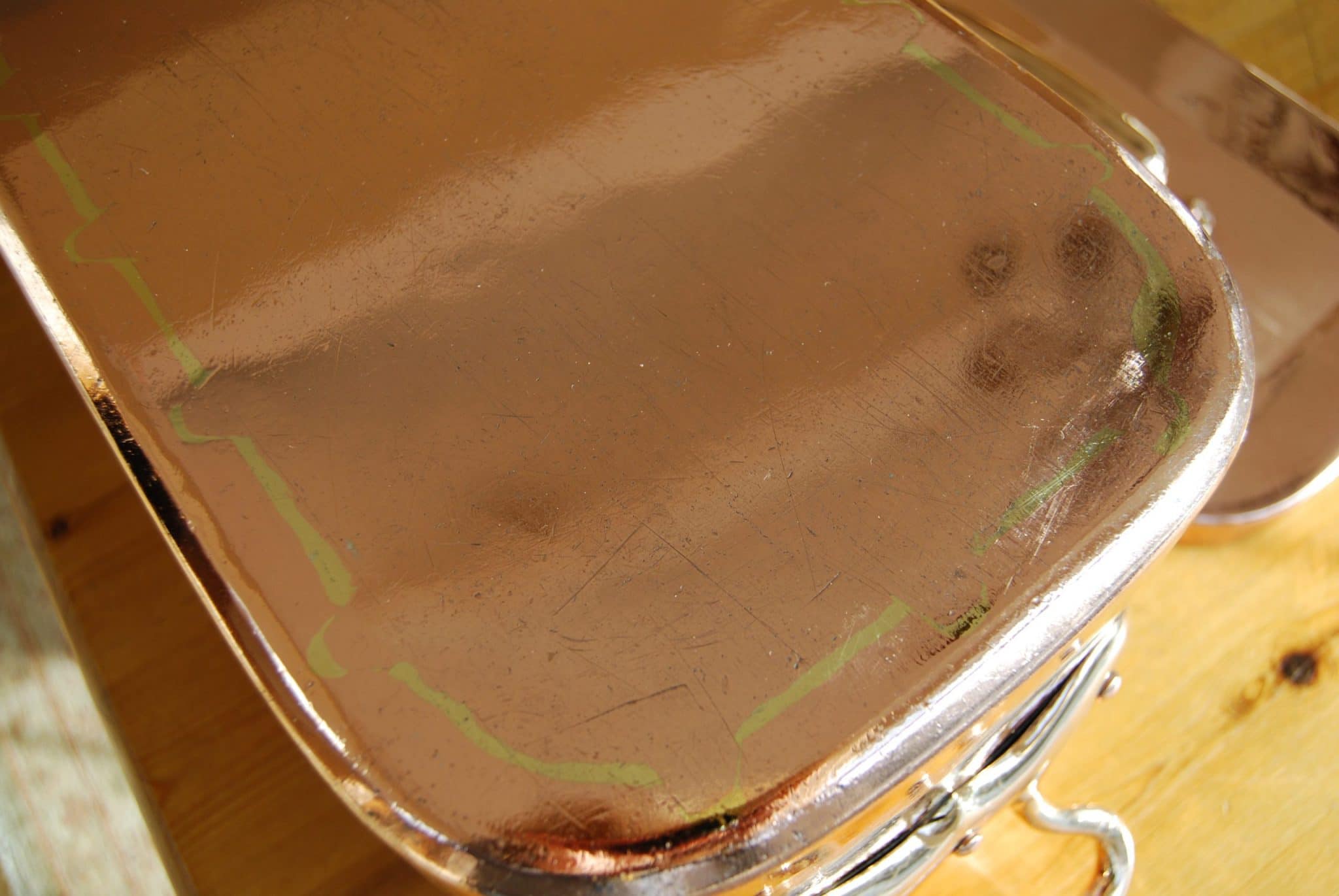
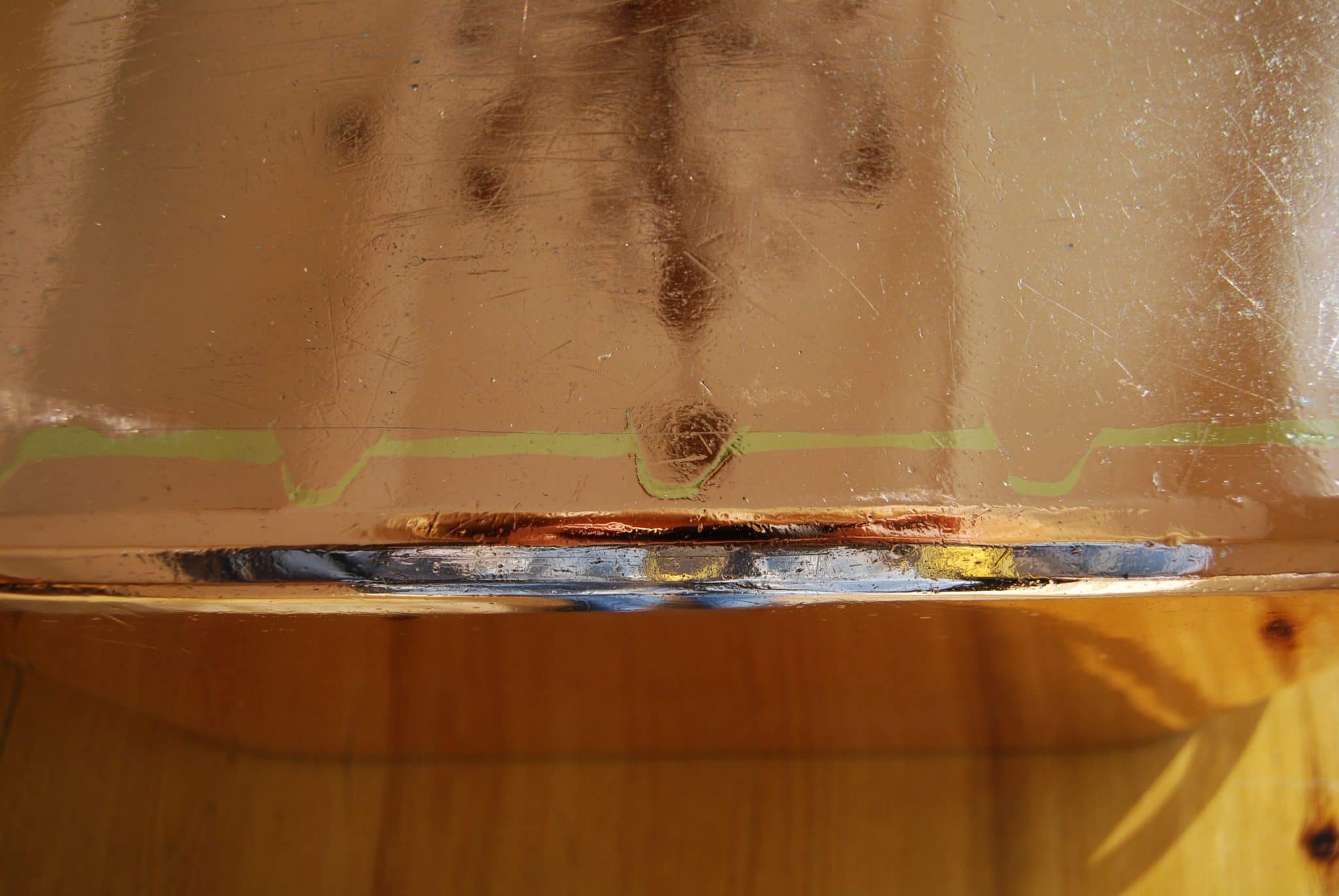
There is one element of this pan that has sparked a bit of a mystery: the zero stamp. It is not a size stamp, as the pan is 38cm and already has a “38” stamped on it. As it happens, I have another daubière, “Henry VIII,” with a zero stamp in the very same location. (That one is 40cm, so the zero could be part of a sizing stamp.) Look at them side by side below, Henry VI on the left, Henry VIII on the right. Could my two Henrys have been marked for the same owner? I acquired them from different sources so it seems unlikely, but how else could two pieces like this have the same unusual number stamp?


I shall continue to investigate this!
